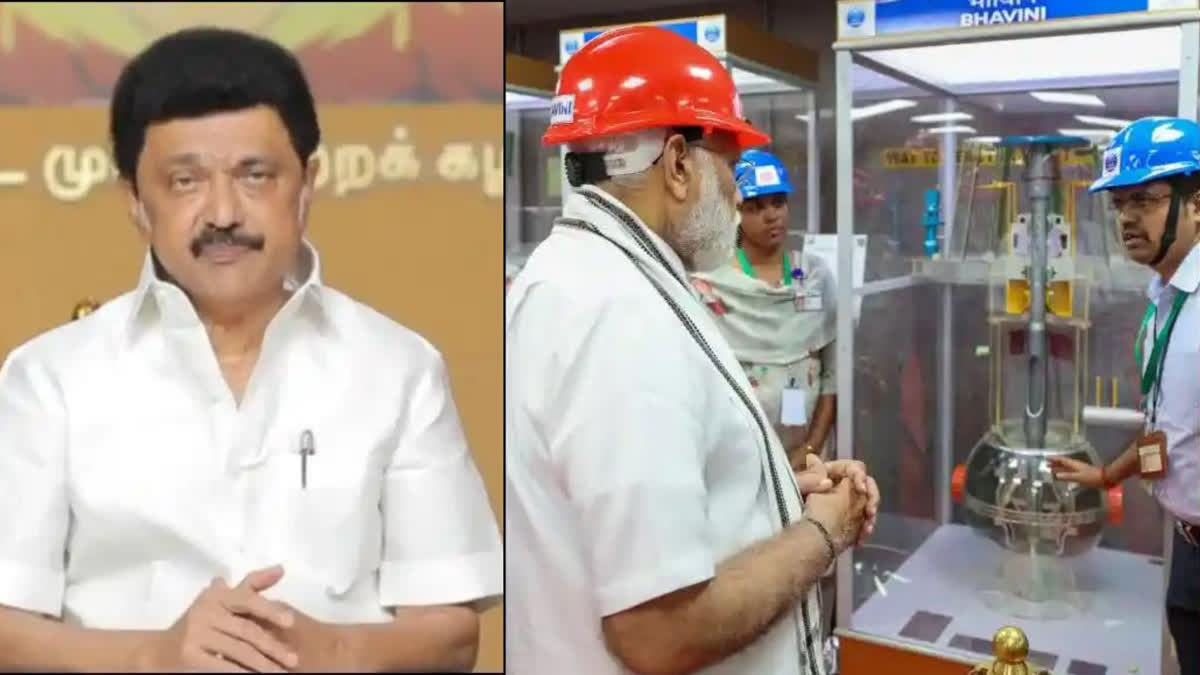Chennai: Prime Minister Narendra Modi on Monday witnessed the commencement of "core loading" of India's first and totally indigenous fast breeder reactor at Kalpakkam in Tamil Nadu. After this, PM Modi expressed confidence that it will help India to become energy self-reliant.
Later in the day in a post on X, PM Modi said the reactor produces more fuel than is consumed and this will "pave way for eventual utilisation of India’s vast thorium reserves and thus obviate the need for nuclear fuel import". "It will help India achieve both energy self reliance and progress towards net zero goal," Modi said in his post.
The 500 MW Prototype Fast Breeder reactor (PFBR) is being built by Bharatiya Nabhikiya Vidyut Nigam Ltd (BHAVINI) at Kalpakkam nuclear reactor complex of Central Atomic Energy Department. This is the first of its kind in India to have this unit using liquid sodium as a coolant. If this reactor becomes operational, India will be the second country after Russia to have a commercial high-speed nuclear reactor.
India is going to experiment its first indigenous PFBR. ETV Bharat spoke with Dr R. Venkateshwaran, Former Head, Radiological and Environmental Science Division, Indira Gandhi Center for Atomic Research, Kalpakkam and Advisor, Breakthrough Science Society.
He explained the technological advancements made possible by breeder reactors and said that there is a need to create awareness among the people. "In a historic moment, the Prime Minister inaugurated a landmark event at the Kalpakam nuclear facility, marking the commencement of loading control rods into the core of a cutting-edge fast breeder nuclear reactor. This reactor, a technological marvel, utilizes plutonium as its primary fuel source," he said.
India's nuclear program operates in three stages
The initial stage harnesses natural uranium to generate power, featuring a simpler design with limited power output. The second stage combines natural uranium with plutonium, a by-product obtained through reprocessing from the first stage. This integration becomes feasible only through the prior success of the first stage, as the necessary fuels are already produced. The third and final stage envisions the utilization of abundant thorium as a fuel source, achievable only through the groundwork laid in the second stage. In this phase, thorium acts as a blanket material surrounding fuel rods, optimizing power production.
The uniqueness of the second stage lies in the fast breeding technology, showcased in the prototype fast breeding reactor program at Kalpakkam. The reactor, a testament to India's technical and technological prowess, demonstrates the sustainable nature of plutonium-based fuel. During fission, plutonium not only produces energy but also converts surrounding natural uranium into new plutonium, creating a self-sustaining chain reaction. This artificial sustainability is a groundbreaking achievement, with one gram of burning plutonium yielding 1.2 grams of new plutonium.
Kalpakkam's program has achieved significant milestones, including the installation of a safety shield and the recent successful filling of liquid sodium, a highly challenging task. "Today, as the first fuel rod is ceremoniously installed, we witness a crucial step towards realizing high-tech sustainable power generation."
Dr. Balasubramanian Venkatraman, Director, Indira Gandhi Nuclear Research Centre, Kalpakkam, spoke to ETV Bharat on when the Kalpakkam nuclear reactor will start generating electricity. He said that all the fuel will be replenished in 4 months and after that the next phase of operations will be started after obtaining approval from the Department of Atomic Energy.
In 5 months, it should start producing electricity. Venkataraman also said that after the start of operation, it will gradually reach the power generation of 500 megawatts by obtaining approval from the Department of Nuclear Energy for each operation.
Not everyone support the project
The proposed reactors at the Kalpakkam nuclear power plant complex are not without opposition. Tamil Nadu Chief Minister M K Stalin did not participate in the reactor program. Explaining this, DMK organizational secretary RS Bharathi said that the Chief Minister did not participate in the event, which shows that DMK does not accept the establishment of fast breeder reactor.
DMK was active in activities to prevent the operation of Sterlite plant. "We will take similar action on the Kalpakkam issue as well, we will not accept what the people of Tamil Nadu do not accept," he said. Pointing out the use of sodium as a coolant in breeder reactor-based nuclear reactors, MDMK General Secretary Vaiko points out that many countries around the world have abandoned this program because it can catch fire easily.
Environmental group "Poovulagin Nanbargal", which has generally led strong campaigns against nuclear reactors, has slammed the breeder reactor project. According to the organisation's report, the program was abandoned in France and Japan due to leakage of liquid sodium used as a coolant in these types of reactors.
Read More



